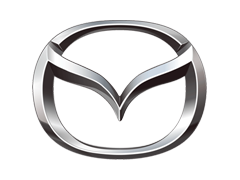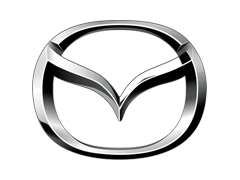The name "Mazda" has both a historical and symbolic meaning. It is derived from the ancient Persian term "Ahura Mazda," which refers to the god of harmony, intelligence, and wisdom in Zoroastrianism, an early West Asian civilization. The founders of Mazda, the Japanese company, interpreted the name "Mazda" as a symbol of the beginning of the East and West civilizations, representing the fusion of different cultures. The choice of this name also reflects Mazda's aspirational goal to contribute towards achieving world peace and bring light to the automotive market.
In addition to its historical significance, the name Mazda, when directly translated, means "light" in Japanese. This aligns with the company's mission to shine a light on the automotive industry and make a positive impact. It also serves as a tribute to Jujiro Matsuda, the second president of the company and one of its integral founders.
Overall, the name Mazda carries a profound meaning rooted in history, culture, and the vision of the company.
The Mazda logo carries symbolic meanings that represent the company's vision and values. The current Mazda logo, introduced in 1997, features a stylized "M" shape with its arms raised like wings in an oval. This design is often interpreted as symbolizing the brand's "flight toward the future," reflecting Mazda's commitment to continuous growth and improvement. The wings shaped like the letter "M" also represent Mazda's flexible thinking, creativity, vitality, kindness, and resilience.
Additionally, the wide "V" angle in the middle of the logo is symbolic of Mazda's commitment to embracing and overcoming challenges while moving forward. It represents the brand's determination to pursue ongoing improvements and its willingness to push boundaries and innovate.
The Mazda logo has evolved over time, starting with a more minimalistic design in 1928 and undergoing various iterations until the current logo's introduction in 1997. Each version of the logo has had its unique visual characteristics and symbolism, reflecting the brand's evolution and values.
Mazda Logo Timeline
1of 151920
PNG
In the first years of its existence, when the plant produced only engineering equipment, the emblem was a stylized image of a milling cutter for metal cutting and machine parts. This emblem reflected the company's focus on manufacturing engineering equipment and metalworking. The stylized image of the milling cutter represents the company's specialization in metalworking and cutting equipment.
2of 151928
PNG
The 1928 redesign of the Mazda logo brought a super minimalistic design with a powerful scarlet-red and white color palette. The logo was characterized by a bold circular frame, inside of which were two straight and short lines extending horizontally towards the center along the central axis of the circle. The badge featured clean, bold lines and a vibrant color scheme with no lettering or additional elements.
However, it appears that this particular logo design was only active for three years. Despite its short lifespan, it's interesting to see how Mazda experimented with different design approaches during this period.
3of 151931
PNG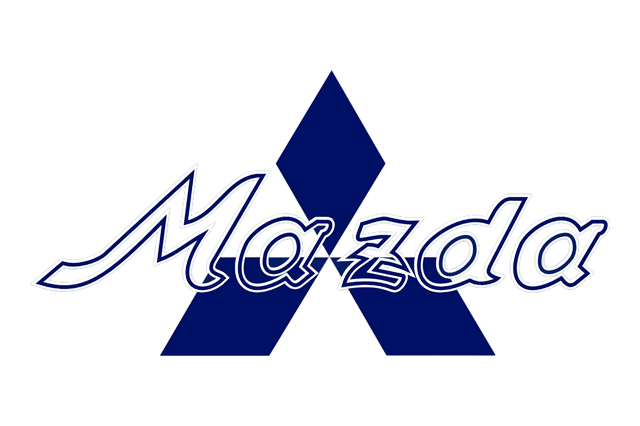
The 1931 redesign of the Mazda logo introduced a significant transformation. The new logo featured bold contoured lettering in a fancy custom typeface with elongated and slightly curved lines. This unique typography added a touch of style and elegance to the logo. What made this design even more distinctive was its placement over the solid blue iconic Mitsubishi diamond badge.
The outline of the letters in the logotype matched the shade of blue of the diamond, creating a cohesive and harmonious look. Additionally, in the overlapping areas, the blue lines had white accents to enhance readability and make the logo visually appealing.
4of 151934 (1)
PNG
In 1934, the Mazda logo underwent another transformation. This time, only the logotype remained on the badge, abandoning the use of any additional elements. The logotype repeated the contours of the wordmark from the previous version but with some notable changes. The lines of the letters became thinner and solid black, deviating from the previous design with outlined blue letters.
By incorporating solid black letters, the logotype created a more bold and simplistic appearance. This design choice aligned it with the blue outlined "Mazda" from the 1931 logo, maintaining some continuity in the brand's visual identity.
5of 151934 (2)
PNG
At the end of 1934, the Mazda logo underwent yet another refinement where the contours of the letters were further refined. The new design featured narrower and taller letters with thicker and heavier lines for a more impactful look, while still maintaining the smooth and elegant design with sharp cuts of the lines.
But it wasn't only the letters that received a visual update: the color palette of the badge was also changed. The black lettering from the previous logo was replaced with a deep blue color. This change added more depth and contrast to the design, making the logo more attractive.
It's interesting to note that this version of the Mazda logo with the deep blue color and refined contours didn't stick around for long.
6of 151936
PNG
The original emblem was created in 1936 and featured a design based on Hiroshima's symbol, which resembled a stream of the river with the same name within the city. The emblem consisted of three parallel lines with a series of kinks in the center, forming the letter "M," which represents the first letter of "Mazda Motor" - the new name of the company.
Over the years, this emblem evolved into the current modern design, which features a stylized "M" in chrome against an oval-shaped background that is subtly evocative of a pair of wings. This emblem represents the brand's high aspirations and its commitment to creating exceptional cars with innovative design and technology.
7of 151951
PNG
The 1951 Mazda logo evolved from its Japanese origins (Native name "マツダ"). It featured a black and white geometric design consisting of three triangles pointing downward. Each triangle incorporated different elements, such as black and white thin lines with straight cuts, arranged in unique ways to create distinct shapes and symbols.
The logo's abstract and modern composition reflected Mazda's innovative approach and design aesthetics during that time. This mysterious and modern logo was in use by Mazda for more than twenty years.
8of 151954
PNG
The redesign of 1954 marked a significant shift in Mazda's logo, transitioning to a text-based design that prominently featured the brand name "Mazda" in uppercase letters. The logo embraced a fresh color palette, incorporating shades of blue and white to create a clean and distinctive look.
The lettering was executed in an italicized sans-serif typeface that exuded a sense of modernity and sophistication. The typography used in the logo was characterized by narrow proportions, contributing to a sleek and streamlined appearance.
9of 151959
PNG
During this period, Mazda adopted a radically changed logo. The emblem consisted of a white circle, bordered by a thin red frame. Positioned within the circle was a handwritten letter "m" in lowercase, featuring elongated sidewalls that extended upwards on the left and downwards on the right. The soft, soothing lines of the bright red letter were designed to draw attention and create a distinctive presentation.
Below the circle, the name "MAZDA" was displayed in capital letters, but with a slight slant. This added a dynamic touch to the logo. The inscription was colored blue, which complemented the overall design and emphasized the brand name.
The 1959 logo represented a significant milestone for Mazda as it marked the release of their first passenger car. The choice of a handwritten letter "m" and the unique composition of the logo aimed to capture attention and create a memorable brand identity.
10of 151991
PNG
In 1975, Mazda made the decision to simplify their logo and create a more spacious design. The new logo featured only the name of the company, which was rendered in a minimalistic and stylish font. This custom font, appropriately named "Mazda," was specifically developed for the company and had no analogs. Its uniqueness helped to establish a distinctive visual identity for the brand.
One notable characteristic of this font is the use of lowercase letters, including the first "m" in Mazda. This choice added a sense of informality and approachability to the logo. Additionally, the letter "z" in Mazda featured white diagonal stripes, which added a touch of visual interest and modernity.
To complement the font, the color used for the logo was a light blue shade. This color choice further enhanced the minimalist and stylish aesthetic of the logo, while also aligning with Mazda's brand image and values.
11of 151991
PNG
In 1991, Mazda introduced a badge to complement the wordmark. This badge featured an oval shape in blue, matching the shade of the wordmark. The oval had a distinct design, appearing thinner towards the top and thicker towards the bottom, creating a visually dynamic effect.
At the center of the badge, there was a diamond-shaped element. This diamond shape was intended to represent sunlight and innovation, symbolizing Mazda's commitment to forward-thinking and cutting-edge automotive technology.
12of 151992
PNG
In 1992, the Mazda logo underwent a subtle yet discernible refinement. This evolution resulted in a more subdued and polished representation. The focal point of this transformation was the meticulous adjustment of shapes, where a conscious effort was made to create thinner and rounder elements. This shift led to the reduction of pronounced angles and points that were present in the previous design.
It's important to note that while these design changes contributed to a softer and more refined overall look, the color scheme of both the font and the logo remained consistent. The branding retained its original colors, thereby upholding the established visual identity that was recognizable to consumers.
13of 151997
PNG
The 1997 Mazda logo introduced a significant change to the company's emblem. Designed by Rei Yoshimara, the logo featured a unique and stylized letter "M" that took the form of an owl. This design choice added a touch of originality and creativity to the logo. The management of Mazda was particularly drawn to the "V" shape within the logo, symbolizing growth and improvement, which aligned with the company's goals and values. Additionally, the logo had the interesting quality of being open to multiple interpretations, with some consumers seeing a tulip within the design. This flexibility in interpretation added an element of intrigue and personal connection to the logo.
Furthermore, the brand nameplate from the 1970s was also incorporated into the current design. The nameplate is in bright blue that gives off a sense of flying and freedom, which echoes the brand's innovative, dynamic, and exciting spirit.
14of 152015
PNG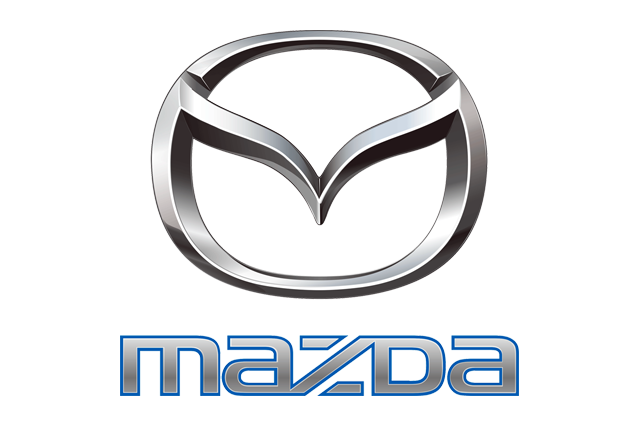
The redesigned Mazda logo of 2015 underwent more than just a color adjustment. In addition to making the silver gradients on the badge slightly lighter and more matte, the logo's logotype below was also updated. The lowercase letters are now executed three-dimensionally, in gradient silver, with each letter outlined in blue. This alteration imbues the inscription with a neon-like glow, making it look illuminated from every angle. The combination of the subtle color adjustments and the three-dimensional logotype gives the updated Mazda logo a sleek and modern appearance that accurately reflects the values and identity of the brand.
15of 152018-Present (vertical)
PNG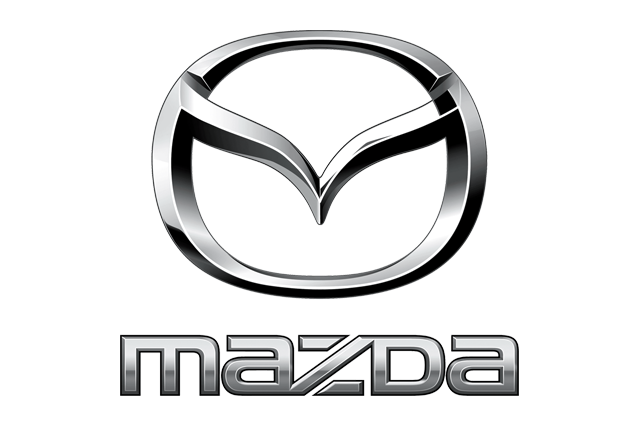
The 2018 Mazda logo builds upon the emblem introduced in 2015, undergoing subtle refinements that reveal a keen attention to detail. Notably, a noteworthy shift occurred as the blue outline encircling the Mazda wordmark transformed into a commanding black hue. This alteration played a pivotal role in instilling a heightened sense of authority and professionalism into the badge. Beyond its visual impact, the transition to black bestowed the emblem with a profound and assured demeanor.
In essence, the logo's evolution embodies Mazda's core values and character. The transformation from blue to black underscores the brand's commitment to conveying its identity in a contemporary and forward-looking manner. The logo's sleek design, coupled with the confident shift in color, masterfully harmonizes tradition and innovation. This elegant synergy radiates a sense of sophistication and propels Mazda's values into the realm of the futuristic.
 Volkswagen
Volkswagen Toyota
Toyota Stellantis
Stellantis Mercedes-Benz Group
Mercedes-Benz Group Ford Motor
Ford Motor Michelin
Michelin Bridgestone
Bridgestone Continental
Continental Goodyear
Goodyear Sumitomo
Sumitomo













